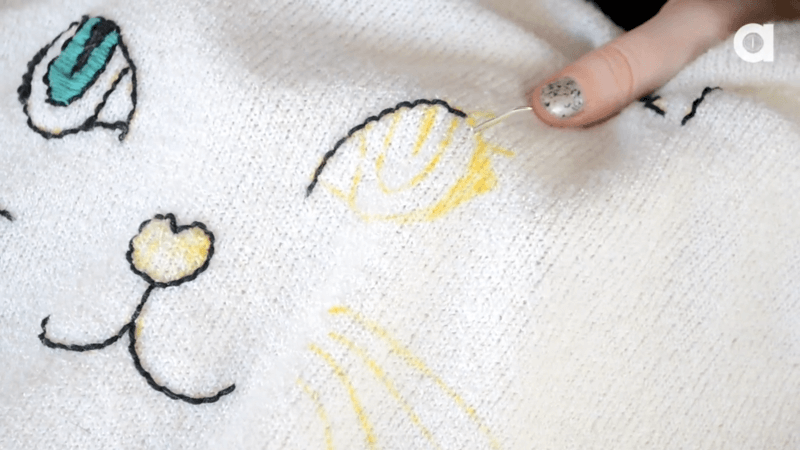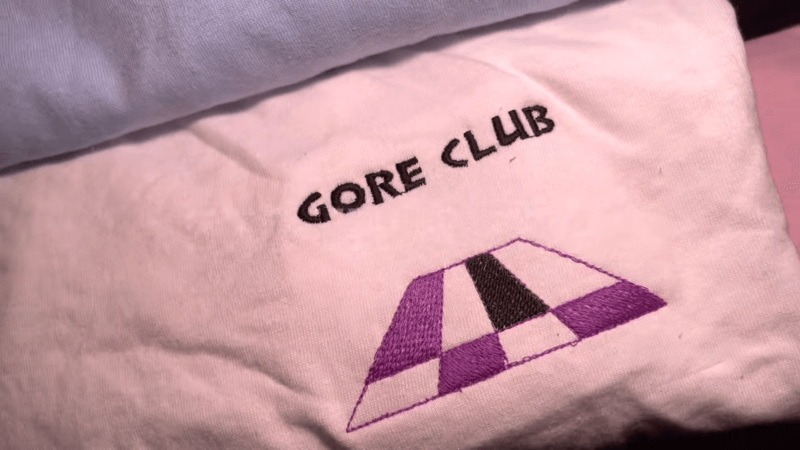No products in the cart.
Blog
Embroidered Cat Sweatshirt the Best Tricks for Beginner
The embroidered cat sweatshirt is not just a clothing item but also a reflection of personal style and creativity. Choosing the perfect design involves a thoughtful process that considers various factors. In this blog, we will explore the steps involved in selecting and creating the ideal embroidered cat sweatshirt design, from choosing materials to mastering embroidery techniques. Whether you’re a beginner or a seasoned embroiderer, crafting your own cat-themed sweatshirt can be an enjoyable and fulfilling project.
How Do I Select the Perfect Embroidered Cat Sweatshirt Design?
To choose the design for your embroidered cat sweatshirt, consider factors like style preference (realistic or stylized), color scheme, and any additional elements you want to include, such as accessories or background scenes. Keep in mind the overall aesthetic you want to achieve, and select a design that reflects your personal taste and complements the sweatshirt fabric.

Designing Your Cat Motif
Determine the style: Decide if you want a realistic depiction of a cat or a stylized, cartoonish version.
- Consider the pose: Choose whether you want your cat to be lounging, playing, or in any other characteristic pose.
- Choose colors wisely: Select colors that complement the embroidered sweatshirt fabric and each other. Consider the cat’s fur color, eye color, and any additional elements you want to include.
- Think about additional elements: Decide if you want to add accessories like a collar, bowtie, or background scene.
Materials Needed
To make embroidered sweatshirts, you’ll need several ideal materials. Here’s a list of common items required:
- Sweatshirt fabric: Opt for a high-quality sweatshirt made of cotton or a cotton blend for durability and comfort.
- Embroidery thread: Choose high-quality embroidery thread in colors that match your design.
- Embroidery hoop: Select an appropriate-sized embroidery hoop that fits the area you want to embroider.
- Embroidery needles: Use sharp embroidery needles suitable for your chosen fabric.
- Fabric marker or chalk: Use a fabric marker or chalk to transfer your design onto the sweatshirt before embroidering.
- Stabilizer: Depending on the fabric and design complexity, you may need a stabilizer to support the fabric during embroidery.
- Scissors: Have a sharp pair of scissors for cutting thread and excess fabric.
- Optional embellishments: Consider adding sequins, beads, or other embellishments to enhance your embroidered cat sweatshirt design.
Embroidery Techniques for a Cat Embroidered Sweatshirt
Embroidering cat designs onto sweatshirts can be a delightful project. Here are a few techniques to consider:
- Outline Stitch: Use this stitch to outline the shape of the cat. It creates a clear, defined line that can emphasize the contours of the design.
- Satin Stitch: Employ the satin stitch to fill in larger areas of the cat’s body or features. It creates a smooth, glossy surface and works well for filling in shapes.
- French Knots: For eyes or smaller details like whiskers, French knots are excellent. They create small, textured dots that add dimension and personality to the cat’s face.
- Backstitch: If you want to add finer details or text, the backstitch is perfect. It creates a solid line and allows for precise outlining or writing.

Types of Fabric Suited for Beginners
When you’re just starting with embroidery, choosing the right fabric is crucial for a smooth learning experience. Here are some fabric types well-suited for beginners:
- Cotton: Cotton is a popular choice for beginners due to its ease of stitching and availability. It comes in various weights and weaves, offering versatility for different projects.
- Aida Cloth: Aida cloth is a type of cotton fabric specifically designed for cross-stitch embroidery. Its even weave and visible grid lines make it ideal for practicing and perfecting your stitches.
- Linen: While slightly more challenging to work with compared to cotton, linen offers a beautiful texture and drape that many embroiderers love. It’s durable and becomes softer with each wash.
- Felt: Felt is forgiving and easy to work with, making it perfect for beginners. Its dense structure holds stitches well, and it doesn’t fray, so you can focus on mastering your embroidery techniques.
Common Mistakes to Avoid When Practicing Embroidery Stitches
Embroidery is a craft that requires patience and practice. Here are some common mistakes to avoid:
- Not Securing the Fabric: Always use an embroidery hoop to keep your fabric taut while stitching. Loose fabric can cause uneven stitches and distort the final design.
- Ignoring Tension: Maintain consistent tension on your stitches. Too tight, and they’ll pucker the fabric; too loose, and they’ll look sloppy. Practice finding the right balance.
- Skipping Knots: Always secure your thread with a knot at the back of your fabric to prevent it from unraveling. Skipping this step can lead to loose threads and a messy finish.
- Using the Wrong Needle: Choose the appropriate needle size and type for your fabric and thread. Using a needle that’s too thick can damage delicate fabrics, while a needle that’s too thin may struggle to pierce thicker materials.
- Not Practicing Regularly: Like any skill, embroidery requires regular practice to improve. Set aside time each day or week to work on your stitches and experiment with new techniques.
If you want to know how to DIY a trendy embroidered sweatshirt for yourself, click here
Conclusion
Selecting the perfect embroidered cat sweatshirt design involves considering factors such as style preference, color scheme, and optional embellishments. By determining the desired style and pose of the cat motif, choosing suitable colors, and mastering embroidery techniques, one can create a unique and personalized sweatshirt. With patience and practice, crafting an embroidered cat sweatshirt can be a rewarding endeavor for any enthusiast
I am Felicity Brown , a writer who is dedicated to the art of embroidery. My heart is stitched with the threads of creativity, and I believe that each carefully woven pattern tells a unique story. I’m on a journey, turning my travels into a canvas full of my colorful creations.



